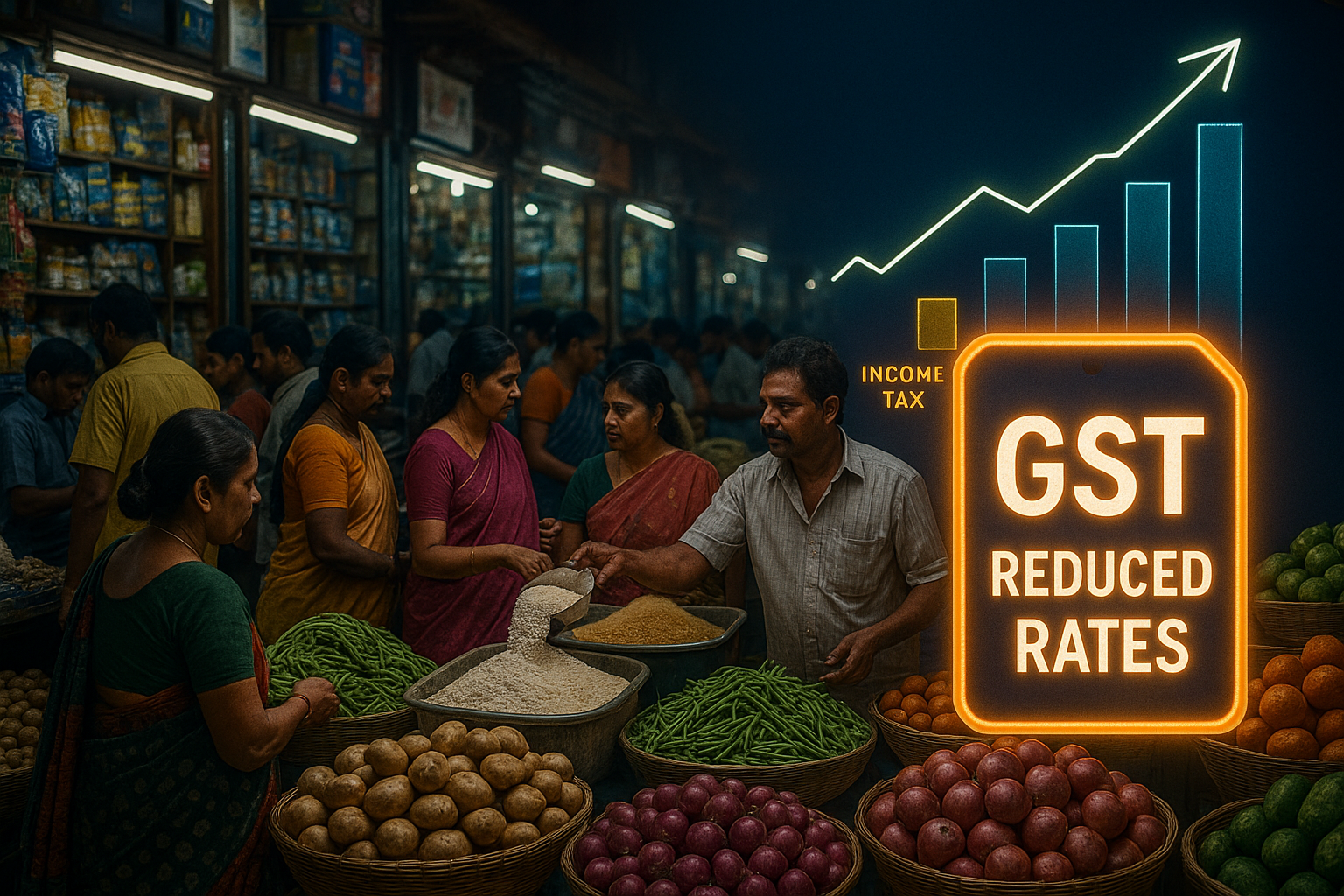According to a new report by Ambit Capital, a GST rate reduction has a significantly higher multiplier effect on the economy compared to income tax cuts. While income tax relief boosts disposable income for a specific segment of taxpayers, GST cuts impact a wider consumer base, lower inflationary pressures, and stimulate demand across multiple industries.
This insight reinforces the government’s focus on GST 2.0 reforms, where rate rationalization is seen as a tool not just for tax simplification but also for economic growth.
Why GST Cuts Have Greater Impact
GST applies to nearly all goods and services, making its reach far broader than income tax. A reduction in GST rates leads to:
Lower prices for consumers, directly stimulating demand.
Increased sales volumes for businesses, improving profitability.
Better compliance and formalization as lower rates reduce incentives for evasion.
By comparison, income tax cuts benefit only the limited pool of taxpayers, leaving much of the informal economy unaffected.
Wider Consumer Benefits
GST cuts directly reduce household expenses on essential goods and services. This creates a consumption-led demand push, especially in sectors like food, textiles, FMCG, and retail. The effect is particularly strong in rural and semi-urban areas, where most citizens fall outside the income tax net but still bear the burden of indirect taxes.
This broader impact makes GST reform a more inclusive growth driver.
Policy Perspective
Ambit Capital’s findings align with the government’s recent emphasis on simplifying GST slabs and cutting rates on mass-consumption items. Policymakers view GST reforms as an instrument to balance affordability with fiscal stability, particularly as India targets sustainable, high-growth pathways under the Viksit Bharat 2047 vision.
However, experts caution that while GST cuts may boost demand, they could temporarily reduce government revenues unless offset by compliance gains and higher economic activity.
Why This Matters
For Consumers: Brings immediate price relief and higher purchasing power.
For Businesses: Expands demand and encourages formalization.
For Policymakers: Reinforces GST as a tool for growth, not just taxation.
By underlining GST’s stronger economic multiplier, the analysis strengthens the case for rate rationalization as part of India’s ongoing reform agenda.












